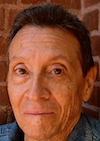 O Canada!
O Canada!
Peggy Cousineau-Levine began her book Faking Death: Canadian Art Photography and the Canadian Imagination (Montreal, Canada: McGill-Queen’s University Press, 2003) by enunciating the premise that the application of non-Canadian ideas to Canadian photography by foreign critics — with me as representative of same — constitutes a grievous error requiring correction and denunciation by Canadian writers. In the preceding two posts and this one, I beg to differ.

“The Tower of Babel,” by Pieter Bruegel the Elder (1563).
All of us who participate actively in contemporary cultural life ― as audience, as critics, as creators ― read and view and listen to work from other cultures regularly, if not daily, encountering it either in its original forms or in translation. Inevitably, we respond to it out of our own cultural and personal backgrounds and experiences, connecting it (or not) to whatever other works have become reference points for us and seem relevant, trying to suss out both what’s familiar and what’s strange in the art under consideration. If of an analytical bent, a common characteristic of critics, we apply to it whatever toolkit we’ve developed in order to understand it better and convey that understanding to our readers.
How Dear to Us Thy Broad Domain!
And while of course we miss some of it due to cultural difference and/or the inherent limitations of translation, it’s self-evident that, forinstance, significant scholarship on Sophocles exists from sources who are neither native speakers of Greek nor even of Greek derivation, and critics who are neither black nor American have offered cogent insights into the work of Miles Davis.
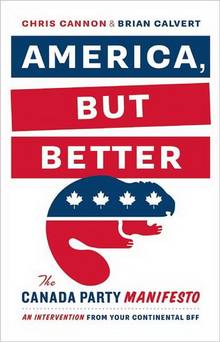
Chris Cannon and Brian Calvert, “America But Better” (2012), cover
By the same token, there may well be uniquely Canadian aspects to the work of Justin Bieber, Avril Lavigne, Neil Young, Stephen Stills, Joni Mitchell, Gil Evans, Celine Dion, Barenaked Ladies, James Cameron, Atom Egoyan, Michael J. Fox, Martin Short, Dan Ackroyd, Mike Myers, Seth Rogen, Leslie Nielsen, Michael Snow, Rob Ford, Glenn Gould, Margaret Atwood, and a flock of other creative types in different media from north of the border. Presumably, by Cousineau-Levine’s measure, all commentary on their work that fails to engage in an informed way with their Canadianness ― which means, by definition, all discussion thereof by non-Canadians ― misses the point, which requires elucidation by a Canadian.
Not only that, but any discussion considering the above-named artists simply as examples of contemporary creators of rock, film and TV comedy, mainstream and experimental film, performance art, classical music performance, and fiction, and that dares to compare and contrast them to other practitioners of those forms from other cultures, immediately stands convicted of forcing them onto the Procrustean bed of “a standardized ‘international’ system of evaluation,” yadayadayada.
May Stalwart Sons, and Gentle Maidens Rise …
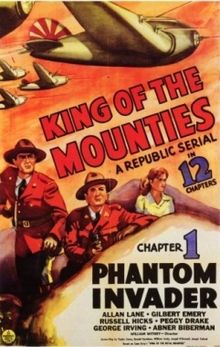
“King of the Mounties” (1942), movie poster
This strikes me as both silly and self-defeating, its mandatory postmodern boilerplate notwithstanding. For starters, pomo theory (to which Cousineau-Levine appears to subscribe) discredits the notion of national identity as thoroughly as it does the notion of individual identity. It’s all syncretic, cronuts from the pasticherie ― and nowhere more so than what the mélange of Brits and Eurotrash in North America cobbled together from various sources after their invasions just a few centuries back, with the unpaid help dragooned from the Dark Continent and the Middle Kingdom.
Nationalism, as Einstein proposed, is “an infantile disease … the measles of mankind.” Historically, of course, the classic strategy for conning people into subscribing to nationalist attitudes involves identifying some outsider ― geographic, ethnic, religious, linguistic ― as threatening Other, out to undermine the nation’s confidence and sense of self, requiring unity and resistance.
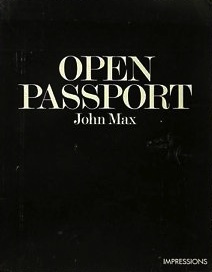
Cousineau-Levine trots out a version of that hoary trope, in the unlikely form of yours truly, to kick off her project. I have to hope that Canadian artists and photographers don’t need such a bogus motive for making work that engages with and reflects their own hybrid culture. Perhaps needless to say, I didn’t sneak into Canada, steal a copy of John Max’s 1974 book Open Passport, and smuggle it out in order to subject it to an unwanted critique. Its U.S. distributor sent it to me in New York for review, which surely indicates that, on behalf of the Canadian photographer, his Canadian publisher solicited response to it from at least this one non-Canadian.
I doubt that they expected me somehow to bring to bear on it a Canadian perspective based on Canadian standards, whatever those might be. I assume they wanted my idiosyncratic Usonian/Murcan take on it, which they got.
To Keep Thee Steadfast Through the Years …
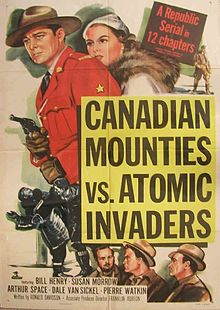
“Canadian Mounties vs. Atomic Invaders” (1953), movie poster
Once creative work in any medium leaves its native land and crosses borders, as it so often does nowadays, it enters, de facto, the international scene for work of its kind and genre, including an international critical discourse. If it travels abroad with its makers’ permission, it forthrightly solicits response from people who do not share the cultural reference points of its makers. The serious audiences and critical respondents that artists find outside their own cultures deserve respect and encouragement, not skepticism, nor harangues.
In those contexts, in my experience, critics from other cultures have an open invitation to bring their often very different cultural and individual perspectives to bear on the work, while critics from that work’s culture of origin generally find themselves welcome to add their insights.
If Canadians want it otherwise, they’d best keep their work at home and stop encouraging outsiders to attend and report on their festivals, review their works, give lectures and sit on panels there, teach in their schools, and otherwise bring their non-Canadian ideas to bear on the Canadian scene. Of course, then they’ll have to lose their habitually aggrieved posture and stop complaining about outsiders ignoring Canadian art, or not taking it seriously — a sacrifice I’m not convinced they’re prepared to make.
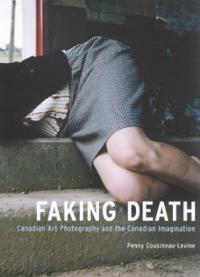 Either way, they have Canadian writers to provide a Canadian take on their work. In her book, Cousineau-Levine makes the case for something distinctively Canadian in that country’s contemporary photography and photo-based art. As the title of her book suggests, she proposes that playing possum constitutes a central strategy of Canadian photography and photo-based art.
Either way, they have Canadian writers to provide a Canadian take on their work. In her book, Cousineau-Levine makes the case for something distinctively Canadian in that country’s contemporary photography and photo-based art. As the title of her book suggests, she proposes that playing possum constitutes a central strategy of Canadian photography and photo-based art.
I’ll take that on faith. I find it rhetorically intriguing, but lack sufficient familiarity in depth with the bodies of work she uses as examples to experience any sense of revelation from her argument — if, indeed, someone could truly share the mindsets and sensibilities and reference points ingrained in members of another culture (even one as proximate as mine, in this case).
Moreover, when I can immediately and decisively disprove part of a book’s opening statement its credibility suffers, and my interest wanes. Having my own words and positions falsified to buttress Cousineau-Levine’s rationale for this study certainly didn’t help me engage with her project. If that’s what Canadians need in order to validate their sense of autonomous cultural identity, they stand on very shaky ground.
Our True North, Strong and Free!
In an article about the Venice Biennale published in the Canadian weekly magazine Maclean’s in 2011, Sara Angel wrote, “Canadian artists have suffered from a sense of inferiority since 1958.” I can’t certify the accuracy of that precise date, but I’ve heard versions of this diagnosis from numerous people in the Canadian art and photography scenes from the 1960s on.
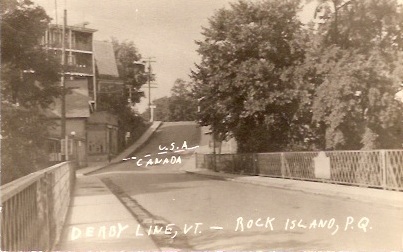
US-Canadian border, looking south from Rock Island, Quebec. Anonymous photo postcard, n.d. Collection A. D. Coleman.
When I traveled the international circuit more energetically than I do today, from the mid-’80s through the late ’90s, making the rounds of the photo festivals and conferences and portfolio reviews and other environments created to encourage professional networking and collegial collaboration, I encountered work from all over the world while meeting and interacting with people from just about everywhere: not only the States and western Europe but South America, eastern and northern Europe, Australia, southeast Asia, the Middle East, Africa, even mainland China. And I watched as their visibility at and participation in these interchanges resulted in exhibitions, publications, and other projects that brought them and their work into wider circulation.
The infrequency with which I found Canadian work on view in these contexts that invite and welcome previously unexhibited and unpublished imagery, and the scarcity of Canadians in attendance (photographers, curators, gallerists, critics, historians, teachers, students), always surprised me. Has that changed? I can’t say, though I hope so. If it hasn’t, then perhaps, instead of rolling over and playing dead, these stalwart sons and gentle maidens just need to rise and get out more — at the risk of being misunderstood, which we all face every day, regardless of the country of our birth, citizenship, and residence.
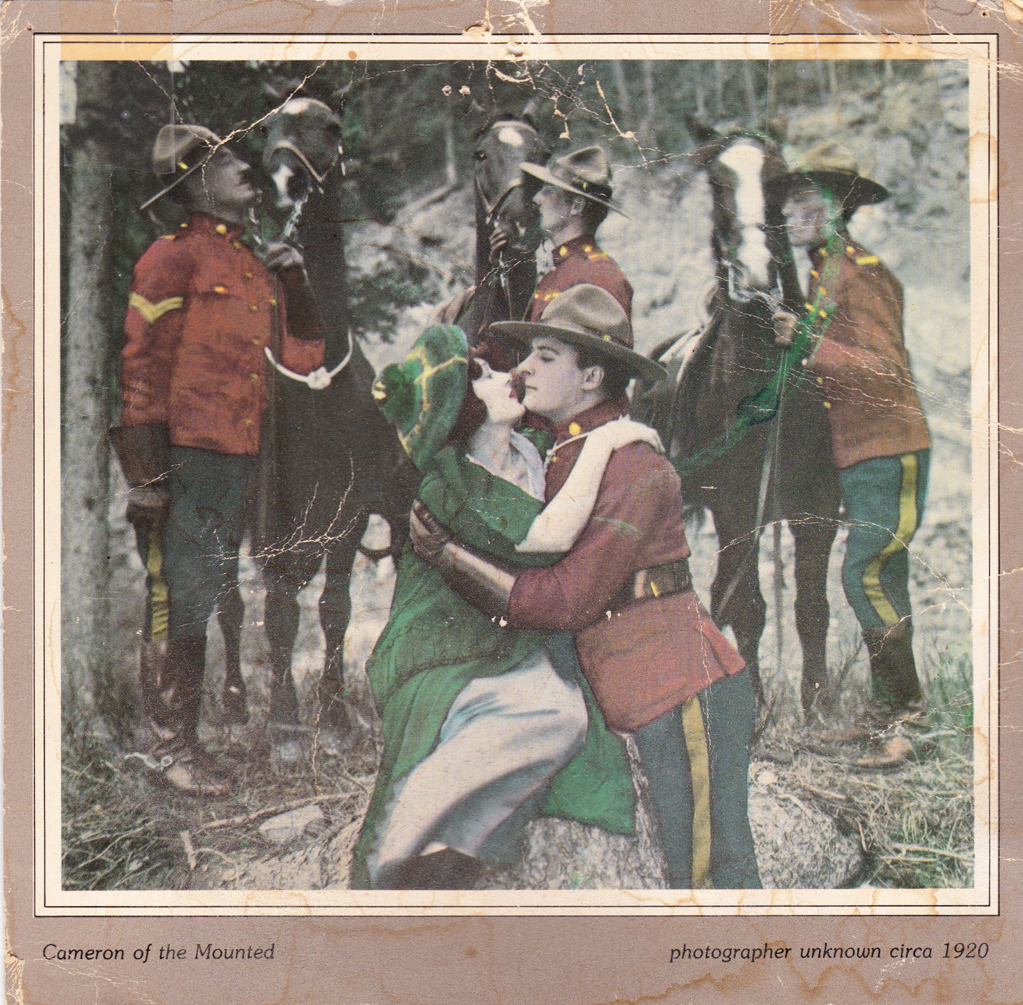
“Cameron of the Mounted,” trading card, ca. 1920.
•
This post supported by a donation from photographer Peter Kayafas.






I haven’t read Ms. Cousineau-Levine’s book, but I had to laugh at your expert rebuttal. Surely, anyone who knows you, knows that you are an iconoclast and given to sharp analysis of received wisdom of any kind. Loved the quote by Marshall McLuhan! We are all fish.
I just love your stories. I am an analogue photographer for the last 40 years and continue so. Especially the surprising article on Faking Death. What a bunch of bs. She is quoted in the first edition re my photographs of naked women on meat hooks. … never in my life did I make images like that … her “fact” was wrong … and it was apparently retracted in the second printing.
Re: Michael Flomen, those naked women on meat hooks were photographs by Earl Kowall, that can be seen in IMPRESSIONS #5, the special issue about Québec photographers published just before Open Passport.